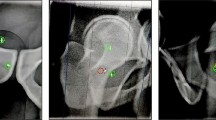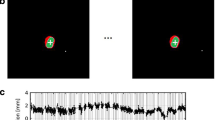Abstract
Intrafraction prostate motion degrades the accuracy of radiation therapy (RT) delivery. Whilst a number of metrics in the literature have been used to quantify intrafraction prostate motion, it has not been established whether these metrics reflect the effect of motion on the RT dose delivered to the patients. In this study, prostate motion during volumetric modulated arc therapy (VMAT) treatment of 18 patients and a total of 294 fractions was quantified through novel metrics as well as those available in the literature. The impact of the motion on VMAT dosimetry was evaluated using these metrics and dose reconstructions based on a previously validated and published method. The dosimetric impact of the motion on planning target volume (PTV) and clinical target volume (CTV) coverage and organs at risk (OARs) was correlated with the motion metrics, using the coefficient of determination (R 2), to evaluate their utility. Action level threshold for the prostate motion metric that best described the dosimetric impact on the PTV D95% was investigated through iterative regression analysis. The average (range) of the mean motion for the patient cohort was 1.5 mm (0.3–9.9 mm). A number of motion metrics were found to be strongly correlated with PTV D95%, the range of R 2 was 0.43–0.81. For all the motion measures, correlations with CTV D99% (range of R 2 was 0.12–0.62), rectum V65% (range of R 2 was 0.33–0.58) and bladder V65% (range of R 2 was 0.51–0.69) were not as strong as for PTV D95%. The mean of the highest 50% of motion metric was one of the best indicator of dosimetric impact on PTV D95%. Action level threshold value for this metric was found to be 3.0 mm. For an individual fraction, when the metric value was greater than 3.0 mm then the PTV D95% was reduced on average by 6.2%. This study demonstrated that several motion metrics are well correlated with the dosimetric impact (PTV D95%) of individual fraction prostate motion on VMAT delivery and could be used for treatment course adaptation.




Similar content being viewed by others
References
Adamson J, Wu Q, Yan D (2011) Dosimetric effect of intrafraction motion and residual setup error for hypofractionated prostate intensity-modulated radiotherapy with online cone beam computed tomography image guidance. Int J Radiat Oncol Biol Phys 80(2):453–461. doi:10.1016/j.ijrobp.2010.02.033
Ghilezan MJ, Jaffray DA, Siewerdsen JH, Van Herk M, Shetty A, Sharpe MB, Zafar Jafri S, Vicini FA, Matter RC, Brabbins DS, Martinez AA (2005) Prostate gland motion assessed with cine-magnetic resonance imaging (cine-MRI). Int J Radiat Oncol Biol Phys 62(2):406–417. doi:10.1016/j.ijrobp.2003.10.017
Kotte ANTJ, Hofman P, Lagendijk JJW, van Vulpen M, van der Heide UA (2007) Intrafraction motion of the prostate during external-beam radiation therapy: analysis of 427 patients with implanted fiducial markers. Int J Radiat Oncol Biol Phys 69(2):419–425. doi:10.1016/j.ijrobp.2007.03.029
Langen KM, Lu W, Ngwa W, Willoughby TR, Chauhan B, Meeks SL, Kupelian PA, Olivera G (2008) Correlation between dosimetric effect and intrafraction motion during prostate treatments delivered with helical tomotherapy. Phys Med Biol 53(24):7073. doi:10.1088/0031-9155/53/24/005
Langen KM, Lu W, Willoughby TR, Chauhan B, Meeks SL, Kupelian PA, Olivera G (2009) Dosimetric effect of prostate motion during helical tomotherapy. Int J Radiat Oncol Biol Phys 74(4):1134–1142. doi:10.1016/j.ijrobp.2008.09.035
Li HS, Chetty IJ, Enke CA, Foster RD, Willoughby TR, Kupellian PA, Solberg TD (2008) Dosimetric consequences of intrafraction prostate motion. Int J Radiat Oncol Biol Phys 71(3):801–812. doi:10.1016/j.ijrobp.2007.10.049
Colvill E, Poulsen PR, Booth J, O’Brien R, Ng J, Keall P (2014) DMLC tracking and gating can improve dose coverage for prostate VMAT. Med Phys 41(9):091705. doi:10.1118/1.4892605
Keall PJ, Colvill E, O’Brien R, Ng JA, Poulsen PR, Eade T, Kneebone A, Booth JT (2014) The first clinical implementation of electromagnetic transponder-guided MLC tracking. Med Phys 41(2):020702. doi:10.1118/1.4862509
Keall PJ, Aun Ng J, O’Brien R, Colvill E, Huang C-Y, Rugaard Poulsen P, Fledelius W, Juneja P, Simpson E, Bell L, Alfieri F, Eade T, Kneebone A, Booth JT (2015) The first clinical treatment with kilovoltage intrafraction monitoring (KIM): a real-time image guidance method. Med Phys 42(1):354–358. doi:10.1118/1.4904023
Nederveen AJ, van der Heide UA, Dehnad H, van Moorselaar RJA, Hofman P, Lagendijk JJ (2002) Measurements and clinical consequences of prostate motion during a radiotherapy fraction. Int J Radiat Oncol Biol Phys 53(1):206–214. doi:10.1016/S0360-3016(01)02823-1
Adamson J, Wu Q (2010) Prostate intrafraction motion assessed by simultaneous kilovoltage fluoroscopy at megavoltage delivery I: clinical observations and pattern analysis. Int J Radiat Oncol Biol Phys 78(5):1563–1570. doi:10.1016/j.ijrobp.2009.09.027
Langen KM, Willoughby TR, Meeks SL, Santhanam A, Cunningham A, Levine L, Kupelian PA (2008) Observations on real-time prostate gland motion using electromagnetic tracking. Int J Radiat Oncol Biol Phys 71(4):1084–1090. doi:10.1016/j.ijrobp.2007.11.054
Padhani AR, Khoo VS, Suckling J, Husband JE, Leach MO, Dearnaley DP (1999) Evaluating the effect of rectal distension and rectal movement on prostate gland position using cine MRI. Int J Radiat Oncol Biol Phys 44(3):525–533. doi:10.1016/S0360-3016(99)00040-1
Adamson J, Wu Q (2009) Inferences about prostate intrafraction motion from pre-and posttreatment volumetric imaging. Int J Radiat Oncol Biol Phys 75(1):260–267. doi:10.1016/j.ijrobp.2009.03.007
Ng JA, Booth JT, Poulsen PR, Fledelius W, Worm ES, Eade T, Hegi F, Kneebone A, Kuncic Z, Keall PJ (2012) Kilovoltage intrafraction monitoring for prostate intensity modulated arc therapy: first clinical results. Int J Radiat Oncol Biol Phys 84(5):e655–e661. doi:10.1016/j.ijrobp.2012.07.2367
Colvill E, Booth JT, O’Brien R, Eade TN, Kneebone AB, Poulsen PR, Keall PJ (2015) MLC tracking improves dose delivery for prostate cancer radiotherapy: results of the first clinical trial. Int J Radiat Oncol Biol Phys. doi:10.1016/j.ijrobp.2015.04.024
Eade TN, Guo L, Forde E, Vaux K, Vass J, Hunt P, Kneebone A (2012) Image-guided dose-escalated intensity-modulated radiation therapy for prostate cancer: treating to doses beyond 78 Gy. BJU Int 109(11):1655–1660. doi:10.1111/j.1464-410X.2011.10668.x
Poulsen PR, Cho B, Langen K, Kupelian P, Keall PJ (2008) Three-dimensional prostate position estimation with a single X-ray imager utilizing the spatial probability density. Phys Med Biol 53(16):4331. doi:10.1088/0031-9155/53/16/008
Santanam L, Malinowski K, Hubenshmidt J, Dimmer S, Mayse ML, Bradley J, Chaudhari A, Lechleiter K, Goddu SKM, Esthappan J (2008) Fiducial-based translational localization accuracy of electromagnetic tracking system and on-board kilovoltage imaging system. Int J Radiat Oncol Biol Phys 70(3):892–899. doi:10.1016/j.ijrobp.2007.10.005
Poulsen PR, Schmidt ML, Keall P, Worm ES, Fledelius W, Hoffmann L (2012) A method of dose reconstruction for moving targets compatible with dynamic treatments. Med Phys 39(10):6237–6246. doi:10.1118/1.4754297
Pommer T, Falk M, Poulsen PR, Keall PJ, T O’Brien R, Petersen PM, af Rosenschöld PM (2013) Dosimetric benefit of DMLC tracking for conventional and sub-volume boosted prostate intensity-modulated arc radiotherapy. Phys Med Biol 58(7):2349. doi:10.1088/0031-9155/58/7/2349
Juneja P, Kneebone A, Booth JT, Thwaites DI, Kaur R, Colvill E, Ng JA, Keall PJ, Eade T (2015) Prostate motion during radiotherapy of prostate cancer patients with and without application of a hydrogel spacer: a comparative study. Radiat Oncol 10(1):1–6. doi:10.11862/s13014-015-0526-1
Huang C-Y, Tehrani JN, Ng JA, Booth J, Keall P (2015) Six degrees-of-freedom prostate and lung tumor motion measurements using kilovoltage intrafraction monitoring. Int J Radiat Oncol Biol Phys 91(2):368–375. doi:10.1016/j.ijrobp.2014.09.040
Nichol AM, Brock KK, Lockwood GA, Moseley DJ, Rosewall T, Warde PR, Catton CN, Jaffray DA (2007) A magnetic resonance imaging study of prostate deformation relative to implanted gold fiducial markers. Int J Radiat Oncol Biol Phys 67(1):48–56. doi:10.1016/j.ijrobp.2006.08.021
Acknowledgements
The authors thank the many contributing staff from the Northern Sydney Cancer Centre, the patients enrolled in the studies, and biostatistician Dr. Rachel O’Connell from the NHMRC Clinical Trials Centre. PJ acknowledges funding from the BARO (Better Access to Radiation Oncology) initiative of the Australian Department of Health, DIT from the NSW Ministry of Health. PJ in addition was supported by Northern Sydney Cancer Centre and the University of Sydney, School of Physics.
Author information
Authors and Affiliations
Corresponding author
Ethics declarations
Conflict of interest
Royal North Shore Hospital has a collaborative research agreement with Varian Medical Systems to support Calypso® and Kilovoltage intrafraction monitoring (KIM) clinical trials. PK holds part ownership of the patent, between Stanford University and Varian Medical Systems, on KIM technology.
Ethical approval
All procedures performed in studies involving human participants were in accordance with the ethical standards of the institutional and/or national research committee and with the 1964 Helsinki declaration and its later amendments or comparable ethical standards.
Rights and permissions
About this article
Cite this article
Juneja, P., Colvill, E., Kneebone, A. et al. Quantification of intrafraction prostate motion and its dosimetric effect on VMAT. Australas Phys Eng Sci Med 40, 317–324 (2017). https://doi.org/10.1007/s13246-017-0536-4
Received:
Accepted:
Published:
Issue Date:
DOI: https://doi.org/10.1007/s13246-017-0536-4




